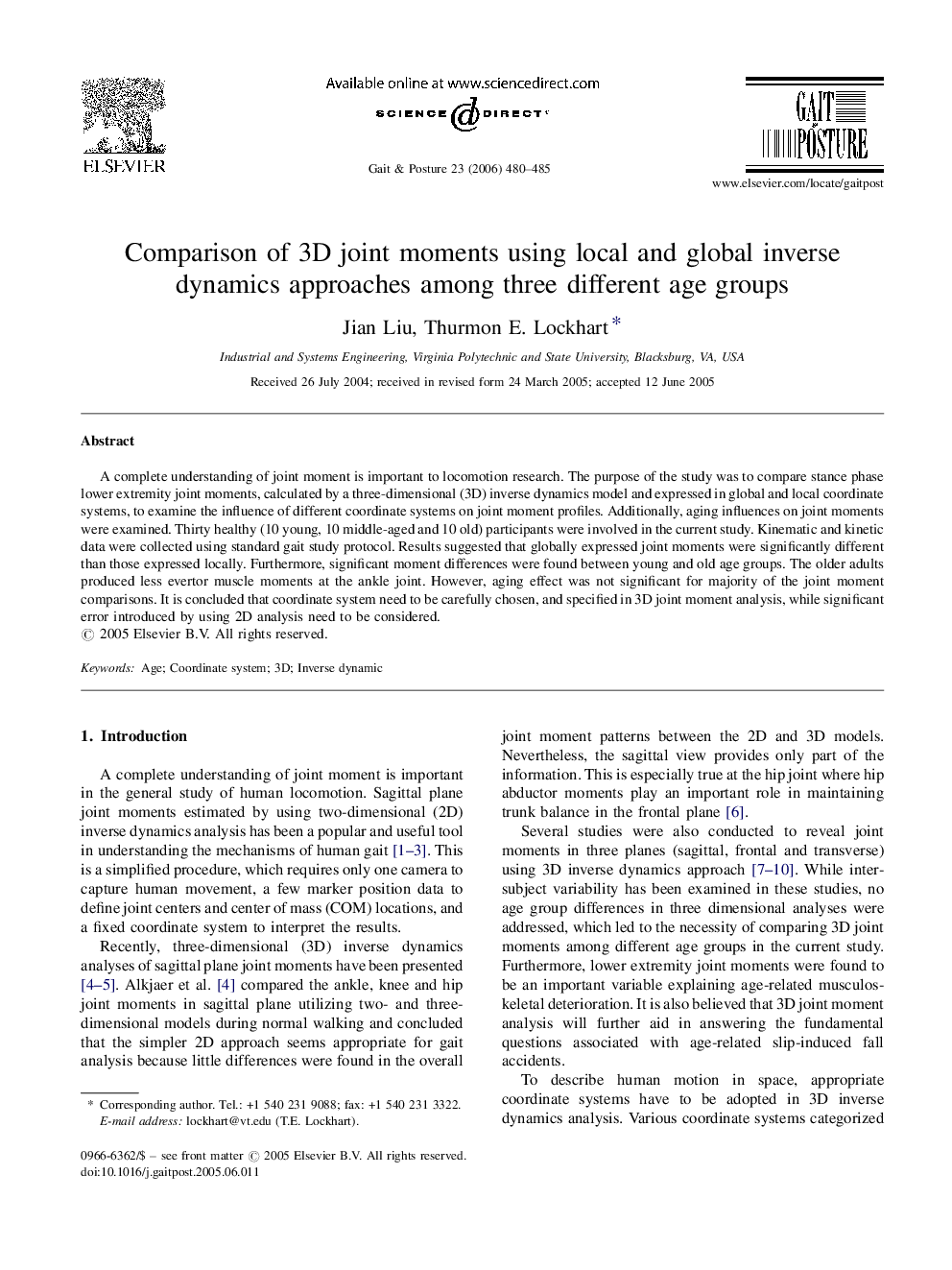| Article ID | Journal | Published Year | Pages | File Type |
|---|---|---|---|---|
| 4058732 | Gait & Posture | 2006 | 6 Pages |
A complete understanding of joint moment is important to locomotion research. The purpose of the study was to compare stance phase lower extremity joint moments, calculated by a three-dimensional (3D) inverse dynamics model and expressed in global and local coordinate systems, to examine the influence of different coordinate systems on joint moment profiles. Additionally, aging influences on joint moments were examined. Thirty healthy (10 young, 10 middle-aged and 10 old) participants were involved in the current study. Kinematic and kinetic data were collected using standard gait study protocol. Results suggested that globally expressed joint moments were significantly different than those expressed locally. Furthermore, significant moment differences were found between young and old age groups. The older adults produced less evertor muscle moments at the ankle joint. However, aging effect was not significant for majority of the joint moment comparisons. It is concluded that coordinate system need to be carefully chosen, and specified in 3D joint moment analysis, while significant error introduced by using 2D analysis need to be considered.
